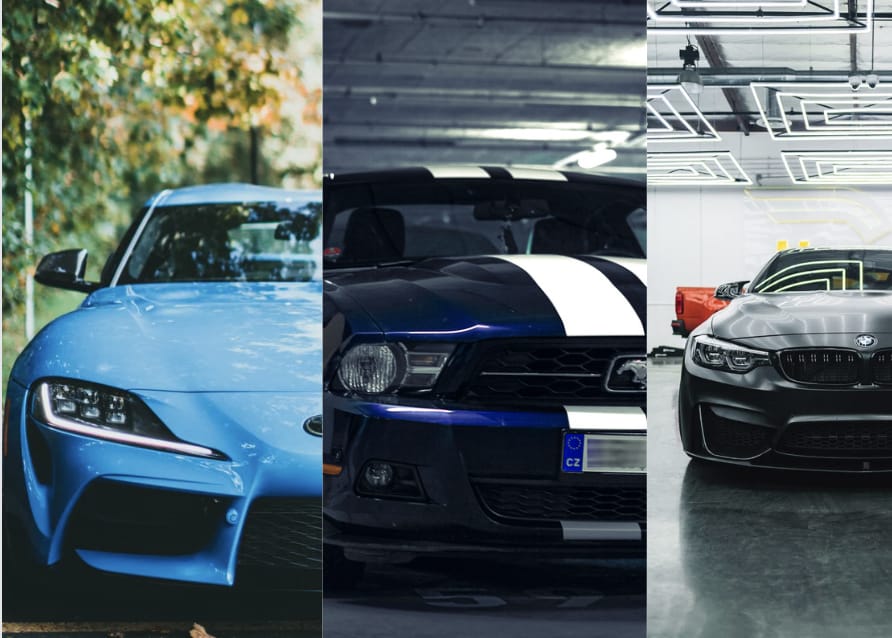Muscle Madness: The Allure of American Muscle Cars

Explore the roaring world of American muscle cars and discover why these powerful machines continue to captivate car enthusiasts around the globe.
Technological trends of Japanese
Japanese car manufacturers have always been at the forefront of technological innovation in the automotive industry. From advanced engine designs to cutting-edge safety features, Japanese cars have consistently pushed the boundaries of what is possible. One notable trend in recent years is the rise of hybrid and electric vehicles, with Japanese automakers leading the charge in developing eco-friendly alternatives to traditional gasoline-powered cars. Additionally, Japanese cars are known for their reliability and fuel efficiency, making them a popular choice among consumers.
Another significant technological trend in Japanese cars is the integration of advanced driver-assistance systems (ADAS) and autonomous driving capabilities. With features such as adaptive cruise control, lane-keeping assist, and automatic emergency braking, Japanese car manufacturers are paving the way for a safer and more convenient driving experience.
German cars technology
German car manufacturers are renowned for their precision engineering and commitment to performance. German cars are often associated with cutting-edge technology and luxurious features that provide a premium driving experience. One key technological trend in German cars is the implementation of advanced infotainment systems, offering seamless connectivity, intuitive user interfaces, and high-quality audio systems.
Another notable aspect of German car technology is their focus on performance and handling. German automakers have a long history of producing high-performance sports cars and luxury vehicles, with advanced suspension systems, aerodynamic designs, and powerful engines that deliver exhilarating performance on the road.
The History and Evolution of American Muscle Cars
American muscle cars have a rich history that dates back to the mid-20th century. These powerful machines were born out of a desire for speed and performance, capturing the imagination of car enthusiasts across the nation. The iconic muscle cars of the 1960s and 1970s, such as the Ford Mustang, Chevrolet Camaro, and Dodge Challenger, are still revered today for their bold designs and impressive performance.
Over the years, muscle cars have evolved to meet changing consumer preferences and environmental regulations. While retaining their powerful engines and aggressive styling, modern muscle cars have incorporated advanced technologies to enhance performance and fuel efficiency. Despite these changes, the spirit of American muscle cars remains unchanged, embodying a sense of raw power and freedom on the open road.
Defining Characteristics of Muscle Cars
Muscle cars are characterized by their high-performance engines, sleek and muscular designs, and rear-wheel drive configurations. These vehicles prioritize speed and acceleration, offering thrilling driving experiences. One defining characteristic of muscle cars is their powerful V8 engines, which produce impressive horsepower and torque.
Additionally, muscle cars often feature aggressive styling cues, such as bold grilles, hood scoops, and wide rear tires, that reflect their performance-oriented nature. The combination of raw power, striking aesthetics, and the unmistakable engine roar make muscle cars stand out on the road.
Iconic American Muscle Cars and Their Legacy
Several American muscle cars have achieved legendary status and left a lasting impact on the automotive industry. The Ford Mustang, introduced in 1964, is considered the quintessential muscle car and has become an enduring symbol of American automotive culture. The Chevrolet Camaro and Dodge Challenger are also iconic muscle cars that have stood the test of time.
These legendary vehicles have not only influenced the design and performance of future muscle cars but have also left a lasting legacy in popular culture. From their appearances in movies and TV shows to their presence in car enthusiast communities, iconic American muscle cars continue to captivate audiences and inspire a sense of nostalgia.
Muscle Cars in Popular Culture and Media
American muscle cars have had a significant impact on popular culture and media. These powerful machines have been featured in countless movies, TV shows, and music videos, often depicted as symbols of rebellion, freedom, and the American spirit. From the iconic car chase scenes in films like Bullitt and Gone in 60 Seconds to their representation in video games like the Need for Speed series, muscle cars have become cultural icons.
In addition to their on-screen presence, muscle cars have a dedicated following in car enthusiast communities and car shows. These events celebrate the beauty, power, and craftsmanship of muscle cars, bringing together enthusiasts from all walks of life to share their passion for these iconic vehicles.
The Future of Muscle Cars: Trends and Innovations
As the automotive industry continues to evolve, so do muscle cars. While maintaining their core characteristics of power and performance, muscle cars are adapting to meet the demands of a changing world. One prominent trend in the future of muscle cars is the incorporation of hybrid and electric powertrains, combining the thrill of a muscle car with the efficiency of alternative energy sources.
Furthermore, advancements in technology are enabling muscle cars to become smarter and more connected. Features like advanced driver-assistance systems, touchscreen infotainment systems, and voice-activated controls are becoming standard in modern muscle cars, enhancing convenience and safety.
Overall, the future of muscle cars looks promising, with a perfect blend of tradition and innovation. These legendary vehicles will continue to captivate car enthusiasts and leave an indelible mark on the automotive landscape for years to come.

 Loading..
Loading..